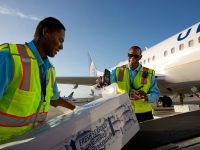Forensic technology supplied by Regula will be replacing manual document checks carried out by humans at Wattay International Airport in Vientiane.
Human processes, which are not always tough enough against doctored documents, were found to be time-consuming, prone to errors, and less effective against modern forgery techniques.
Regula’s technology is more dependable to detect document forgeries enabling transnational crime such as human trafficking, smuggling or illegal migration. The Lao People’s Democratic Republic faces growing challenges like anywhere else to eliminate security threats from the travel ecosystem, and in partnership with IOM and the Australian Department of Home Affairs, the Lao immigration authorities has chosen to deploy the Regula 4306 video spectral comparator at the country’s major air hub in Vientiane.
Border officials received specialist training from Regula experts on how to use the devices and verify a wide range of IDs from 251 countries and territories.
Shareen Tuladhar, Chief of Mission, IOM in the Lao People’s Democratic Republic said, “Integrating Regula’s devices into the Lao border management operations is a vital step toward combating serious crimes such as human trafficking and irregular migration”.
With over 40 types of light sources and 18 light filters, the Regula 4306 allows authorities at the second line of border control to examine the most intricate document security features, such as holograms, watermarks, microprinting, and optically variable elements, ensuring a more reliable fraud detection process.
Integrated with Regula Document Reader SDK, RFS enables comprehensive, automated document checks, eliminating the need for additional equipment or software. Regula Document Reader SDK can instantly recognise and validate IDs’ machine-readable zones (MRZs,) RFID chips, barcodes, and invisible personal information (IPI), significantly reducing manual workload and minimizing human error.



















